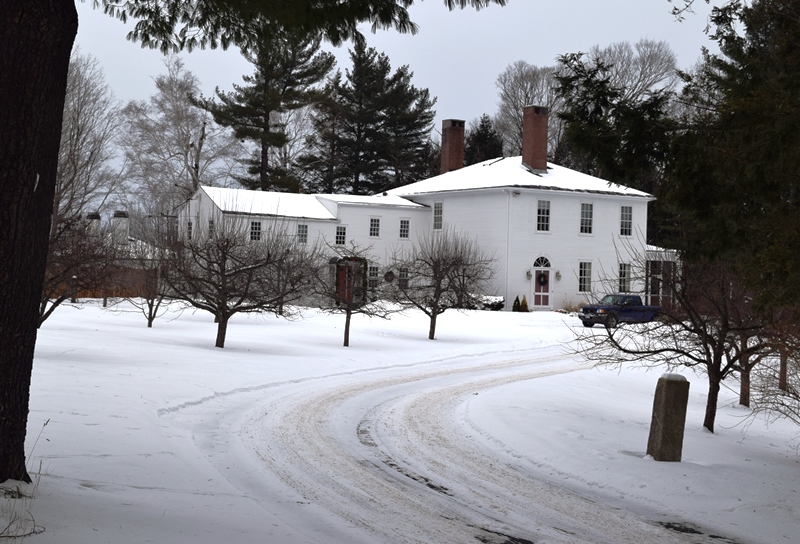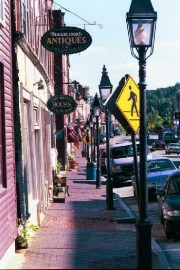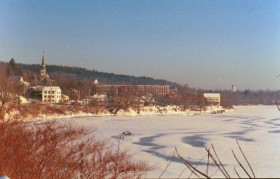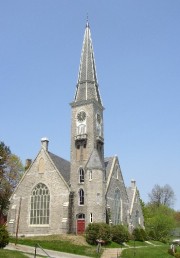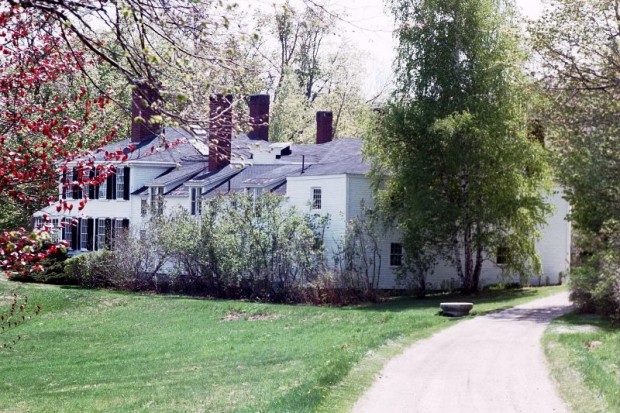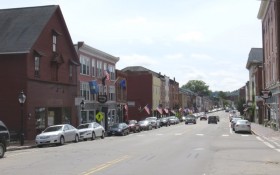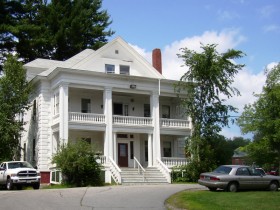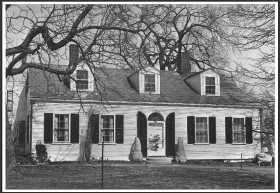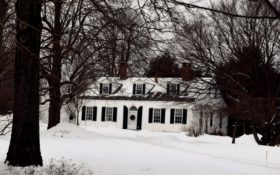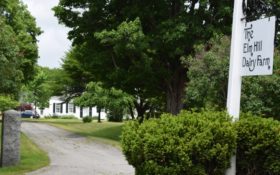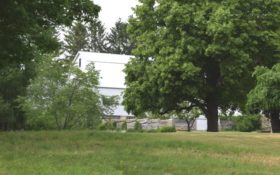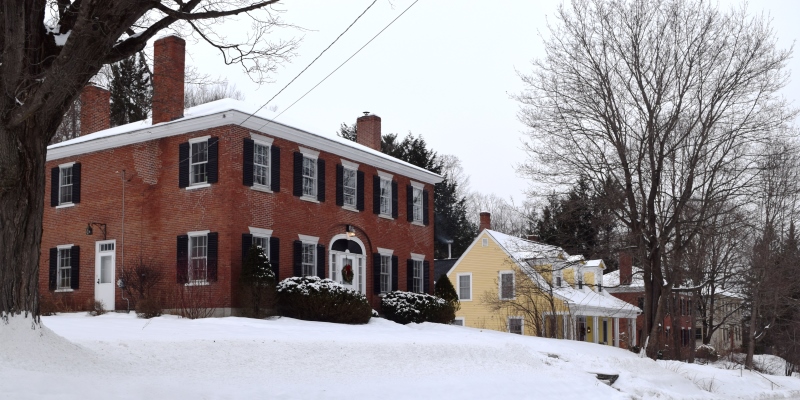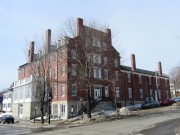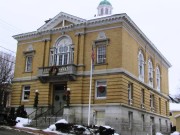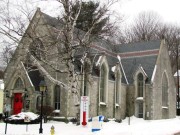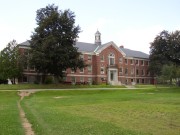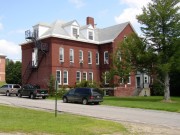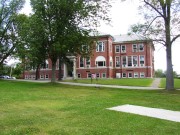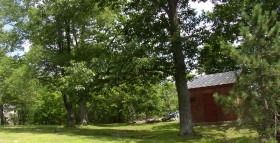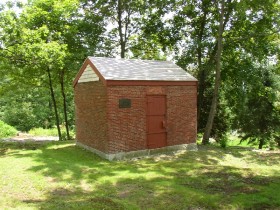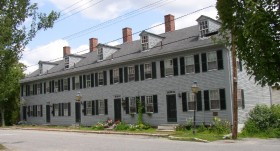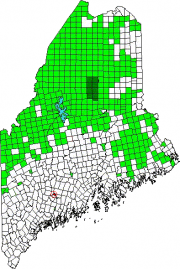
Location Map for Hallowell
| Year | Population |
|---|---|
| 1970 | 2,814 |
| 1980 | 2,502 |
| 1990 | 2,534 |
| 2000 | 2,467 |
| 2010 | 2,381 |

Population Trend 1790-2010
| Geographic Data | |
|---|---|
| N. Latitude | 44:17:38 |
| W. Longitude | 69:48:53 |
| Maine House | District 84 |
| Maine Senate | District 4 |
| Congress | District 1 |
| Area sq. mi. | (total) 6.1 |
| Area sq. mi. | (land) 5.9 |
| Population/sq.mi. | (land) 403.6 |
County: Kennebec
Total=land+water; Land=land only |
|
Clipper Ship Built Here
- Dashaway–1854
[HALL-o-well] is a city in Kennebec County, incorporated as a town on April 26, 1771 and as a city on February 17, 1852.
It was named for Benjamin Hallowell, a wealthy Boston merchant who was a proprietor of the Plymouth or Kennebec Patent.
Originally it included the present Augusta, Chelsea, and part of Manchester.
Known as Bombahook, Medumcook, Keedumcook, but mostly as “the Hook,” the origins of the village name is unclear, though the Kennebec River “hooks” or curves here. According to Colonel William Lithgow in his 1767 deposition, the Indians called it Keedumcook “because the river was very shoal there and from the gravel and sand that appeared almost across the river at low water.” (Eckstorm, p. 144)
The first settler arrived in 1762 as the proprietors offered land to colonize the area.
Ephraim Ballard arrived in 1776 and his wife Martha the following year. Maine’s first Anti-Slavery Society was founded in Hallowell on November 18, 1833.
U. S. Representative and U.S. Senator George Evans was born here in 1797. Evans was Maine’s Attorney General in the 1850’s.
John Sheppard in his 1865 Reminiscences of the Vaughan Family has this wistful recollection of Hallowell in the early 19th century:
Hallowell at The “Hook” where, at low water, the sandy bottom of the Kennebec River is exposed.The Hook was a level cultivated field, with a margin of lofty trees on the steep bank to the water’s edge, overshadowing the main channel which runs round snug to the shore. It was here, tradition informs us, that Arnold encamped while his batteaux were being made at Pittston for the expedition up the river to Quebec.
On the southern side of this promontory, where the bank rose high above the water, a few rods back, stood an old red house, in form of an L, with a pretty grass plat in front, and small garden at the side, in which it was said the first rhubarb plant in Maine was raised. The house faced a long wide reach of the river, some two or three miles, as it flowed down among the thickly wooded hills on each side ;—a spot whore in my childhood I have often listened to the evening song of the whippoorwill from the opposite shore, as though the bird and boy were both looking down where the moonlight slept upon the waters. Below the house was “Sheppard’s wharf,” where the steamboat landing is now seen near the curve.
It was in this old red house my father had resided some two or three years after his emigration from England, and where Dr. Vaughan and his family staid with him, till the house on the hill was ready. I have an obscure, indistinct recollection of that time. I well remember Hallowell, when it was a sylvan amphitheatre of hills, only dotted with a few buildings, and those chiefly on the curved shore. But the old red house has utterly vanished. Some kind of machine shop or manufactory stands near its site; the lofty trees which overshadowed the shore of the “Hook,” are all gone, except a few mourners at the extreme part near the mill brook; and not one trace of beauty is left behind. Even the steep bank which overlooked the long reach fronting the house has been cut down almost to the water. [p. 11]
John Hubbard, Principal of the Academy at Hallowell, a medical doctor, and governor of Maine (1850-1853), was a long-time resident of Hallowell. U.S. Senator Amos Nourse, also a medical professional, served as postmaster in Hallowell 1822-1841. Peleg Sprague practiced law here and became a legislator, U.S. Representative, and U.S. Senator. Another U.S. Senator and state legislator, Reuel Williams, was born here in 1783. Jacob Abbott, a prolific author of juvenile fiction and a professor at Amherst College, was born here in 1803. Hallowell is the birthplace in 1790 of mid-19th century U.S. Representative Hiram Belcher.
Early in the 19th century, Hallowell on the Kennebec has become an important commercial center in the District of Maine. River ice and shipbuilding were staple industries.
Hallowell’s granite quarries were active and productive in the 19th century, with a quarry on “Granite Hill.” Two granite workers unions represented workers in the City: the Hallowell Branch of the Granite Cutters’ Union (organized in 1888) and the Quarrymen’s Union (organized in 1903). Joseph R. Bodwell was an operator of quarries in Hallowell, a mayor of the City, and governor of Maine.
In 1875 the Industrial School for Girls opened, with the goal of rescuing homeless girls who, “under the genial influence of kind treatment, and physical and moral training, they may be won back to ways of virtue and respectability.”
Later known as the Stevens School (1915-1970), the 14-building, 63.5-acre property had been a pre-release center for male offenders, and a campus for State offices. (See photo at right.)
Maine’s smallest city in area has a vital downtown with antique and book shops, along with restaurants. The old road grader at left, located in 2005 at the City Public Works building on Water Street, is itself an antique.
Entertainer Vaughn Meader, producer of “The First Family, a recording spoof of the Kennedys, operated a restaurant in Hallowell.
Form of Government: Council-Mayor-Manager.
Additional resources
The Architecture of Hallowell, Maine: a study of the periods of American architecture represented in Hallowell between 1790-1910. Hallowell, Me. Hallowell Associates for The Arts. 1969.
Ava Harriet Chadbourne. Maine Place Names and The Peopling of its Towns.
Cole, Jonathan, 1803-1877. Hallowell from 1629 to 1798: Lyceum Lecture 1848. Hallowell, Me. J. Cole. 1848.
Mahoney, Gerald T. Ardent Spirits: the Franklin Debating Society: A Social History of Hallowell, Maine in the Early 19th Century. Hallowell, Me. Hains Ledge Press. 2003.
*Maine. Historic Preservation Commission. Augusta, Me. Text and photos from National Register of Historic Places.
Nason, Emma Huntington, 1845-1921. Old Hallowell on the Kennebec. Bowie, Md. Heritage Books. 1989. [Maine State Library]
Norton, Edward Preble. Legends and Otherwise of Hallowell and Loudon Hill. Augusta, Me. Press of Charles E. Nash & son. 1923.
Sheppard, John Hannibal. Reminiscences of the Vaughan Family, and More Particularly of Benjamin Vaughan, LL.D. Boston. D. Clapp & Son, Printers. 1865.
Vaughan, William Warren. Hallowell Memories. Hallowell Me. Private print. 1931. [University of Maine, Raymond H. Fogler Library, Special Collections]
Writers’ Program (Me.). Augusta-Hallowell on the Kennebec. New York. AMS Press. 1983 Reprint of the original, 1940, from the Federal Writers’ Project.
National Register of Historic Places – Listings
Elm Hill Farm
Litchfield Road] This 1799 wood frame cottage, built by John Merrick, is located about 1,300 feet back from the Kennebec River at the top of Hallowell’s hillside, bordering the residential area. The cottage has long been the central dwelling in a farm complex including a garage, storehouse and barns.
Merrick was born in London in 1766 and received a classical education. From 1794 to 1797 he lived with the family of Dr. Benjamin Vaughan as a tutor. In 1795 he accompanied Mrs. Vaughan and her children to New England. In 1797, Merrick returned to England where he married Rebecca Vaughan, sister of Dr. Benjamin and Charles Vaughan. He brought her to Hallowell where he built the spacious cottage still known as the Merrick Cottage.
At the time the village was growing rapidly. Merrick became involved in many community affairs, especially in the cause of education. In 1802, he was appointed a Trustee of the Hallowell Academy, devoting himself to the interests of the school. He was also a member of the Board of Overseers of Bowdoin College from 1805 to 1851.* [State Park and Recreation Commission photo]
Hallowell Historic District
[The hillside of Hallowell overlooking the Kennebec River] The District reflects Hallowell’s significance for its 19th century river port that has retained, in remarkably complete form, its architectural integrity. Hallowell contributed to the economic, social, and political history of the state and nation.
Of the 450 buildings located in the historic district, 85% were built during the 18th and 19th centuries. Half were built before 1865. On Water Street in the commercial section between Temple and Winthrop Streets 42 of the 45 buildings are of pre-20th century origin. Two-thirds of these commercial buildings were built before 1835 and the remaining third before 1900. Neither fire nor flood nor urban renewal have altered significantly this remarkable architectural grouping that developed at the river port in Hallowell’s heyday.*
Maine Industrial School for Girls
[also known as the Stevens School Historic District, Winthrop Street, 0.5 miles West of its junction with Water Street] The Maine Industrial School for Girls was a small campus facility built on an eastern facing hill high above the commercial center of Hallowell. Once the location of a 19th century farm, the site has been extensively graded, to create a north south stretching terrace on which the buildings are located. The earliest structure was Flagg-Dummer Hall (built in 1874, destroyed by fire and rebuilt in 1899, later destroyed and rebuilt in 1969). Building Number 2 was built in 1885 and was destroyed by fire in 1900. Baker Hall came in 1898; Erskine Hall, in 1902.
The School was founded in 1874 by the State of Maine as a place where wayward girls, who were considered a danger to themselves or a threat to society, could be safely housed and given a moral, social and academic education. Prompted by an incident in 1867 in which a teen-age girl was arrested, convicted and jailed for petty larceny, it took seven years and a petition signed by “a thousand ladies of Portland” before the funding and legislation was in place “to make like provisions for the reform of girls as had been made for boys. Over the years the mission of the school evolved from that of an educational facility to that of a disciplinary, or reform institution, before closing in the early 1970s.*
Powder House Lot
[High Street, 1/4 mile South of junction with Winthrop Street.] The Powder House is one of three surviving early-19th century magazines in Maine. The Buxton Powder house and the Wiscasset Powder House were both built prior to 1813. Tradition places the construction of the Powder House to about 1812, however town records indicate that it was not erected until 1819, when Maine was preparing for separation from Massachusetts, and the militia flourished in the community.
The Powder House had been constructed of local brick and granite, and was situated on a hill that provided an extensive view of the Kennebec River. In preparation for either an unwanted advance up the Kennebec, or a local muster day, gunpowder and field supplies were laid upon the shelves marked with the names of each of the local militia members.
At the time, Hallowell was the principal settlement along the river. After the Revolutionary War, it continued to grow, both in population and in its militia system. 1790 to 1830 were the strongest years of the “common militia” system. Men were required to provide their own arms and equipment and were not uniformed nor, in the beginning, paid for training. The system did provide an organization and a measure of training for the men.
During the War of 1812 Colonel William Oliver Vaughan, son of one of the earliest prominent families, became the Commander of the Hallowell militia, until his death in 1825. The local units trained hardily and muster day became an occasion for ceremony, exercise, music and pride.
By 1843 the legislature relaxed requirements for local militias and the Powder House fell out of use. In 1839 the cannon “Thunder Jug of Maine,” was brought to Hallowell and by the end of the century had been positioned next to the Powder House. In 1947 the Town of Hallowell sold the Powder House and lot to the local Chapter of the National Society Daughters of the American Revolution.*
Row House
[106-114 2nd Street] This is the sole remaining example in Maine of a wooden row house. It is the wooden equivalent of Baltimore’s famous brick row houses. The row house plan, a file of two large rooms offset by a hallway with main and servant staircases, was traditional with London builders since the 17th century.
Virtually unaltered, it was built about 1840 by Isaac Gage, a Hallowell merchant and real estate developer, as an investment property. An 1855 map marks the many buildings in his name, some of which he had converted into rental properties.
It is an architectural laboratory for studying early machine-produced woodwork, nails, and hardware, methods of construction, and ornamental standards for labor housing of the 1840 period of the American Industrial Revolution. It was occupied by skilled immigrant Italian stone carvers who made Hallowell granite known across the nation.*
Vaughan Homestead
[Middle Street off Litchfield Road] The names Benjamin Vaughan, M.D., LL.D., and Charles Vaughan, Esq. are important ones in the founding of the town of Hallowell, now a city. Charles came in 1791; Benjamin, in 1797. The two brothers settled on the large estate (see photo above) built by Benjamin Vaughan on land inherited from his mother, Sarah Hallowell. Both men were English gentlemen coming to Hallowell to make permanent homes. They devoted their energies and resources to its material, social, intellectual, and religious improvement. Hallowell owes its early commercial prosperity and high social standards to these two gentlemen.
Benjamin’s father Samuel was an admirer of George Washington and Benjamin developed an affinity for the democratic ideas of John Jay and Benjamin Franklin. Franklin and Jay were the United States peace Commissioners sent to Paris in 1782 to establish a formal peace with Great Britain following the American Revolution. Vaughan went to Paris to consult with Franklin and Jay, spending a year in this peace mission. England, was insisting on treating the country as colonies. Jay declared that peace could not be made until the colonies were recognized in the treaty as the United States of America. No progress was made until Dr. Vaughan returned to England and by his personal efforts convinced Lord Shelburne of the necessity of accepting the terms proposed by the American commissioners. The treaty was then completed and Dr. Vaughan, at Shelburne’s request, traveled to Paris with the royal messenger who carried the new commission recognizing the independence of the United States of America.* [See large middle photo above.]


